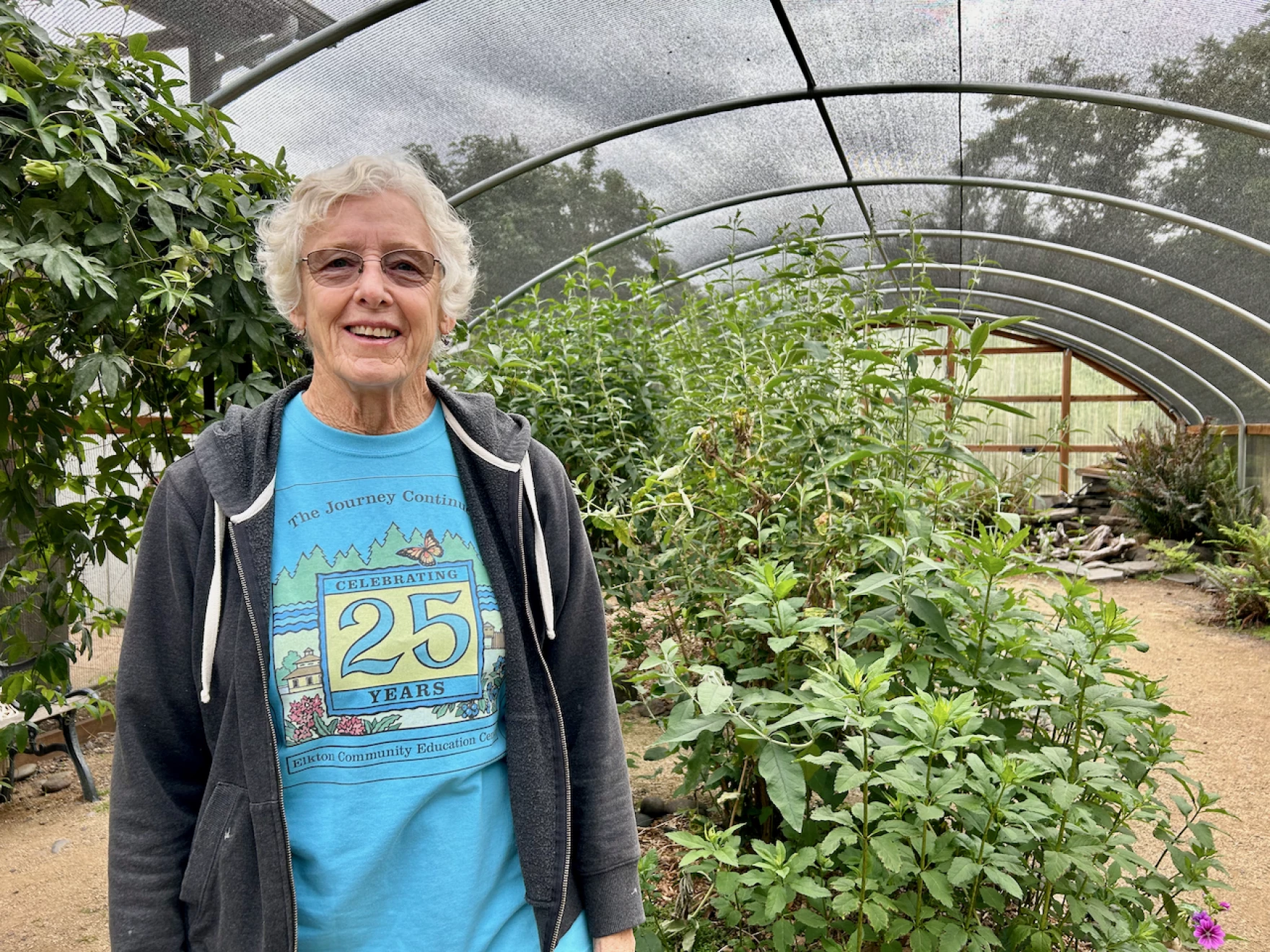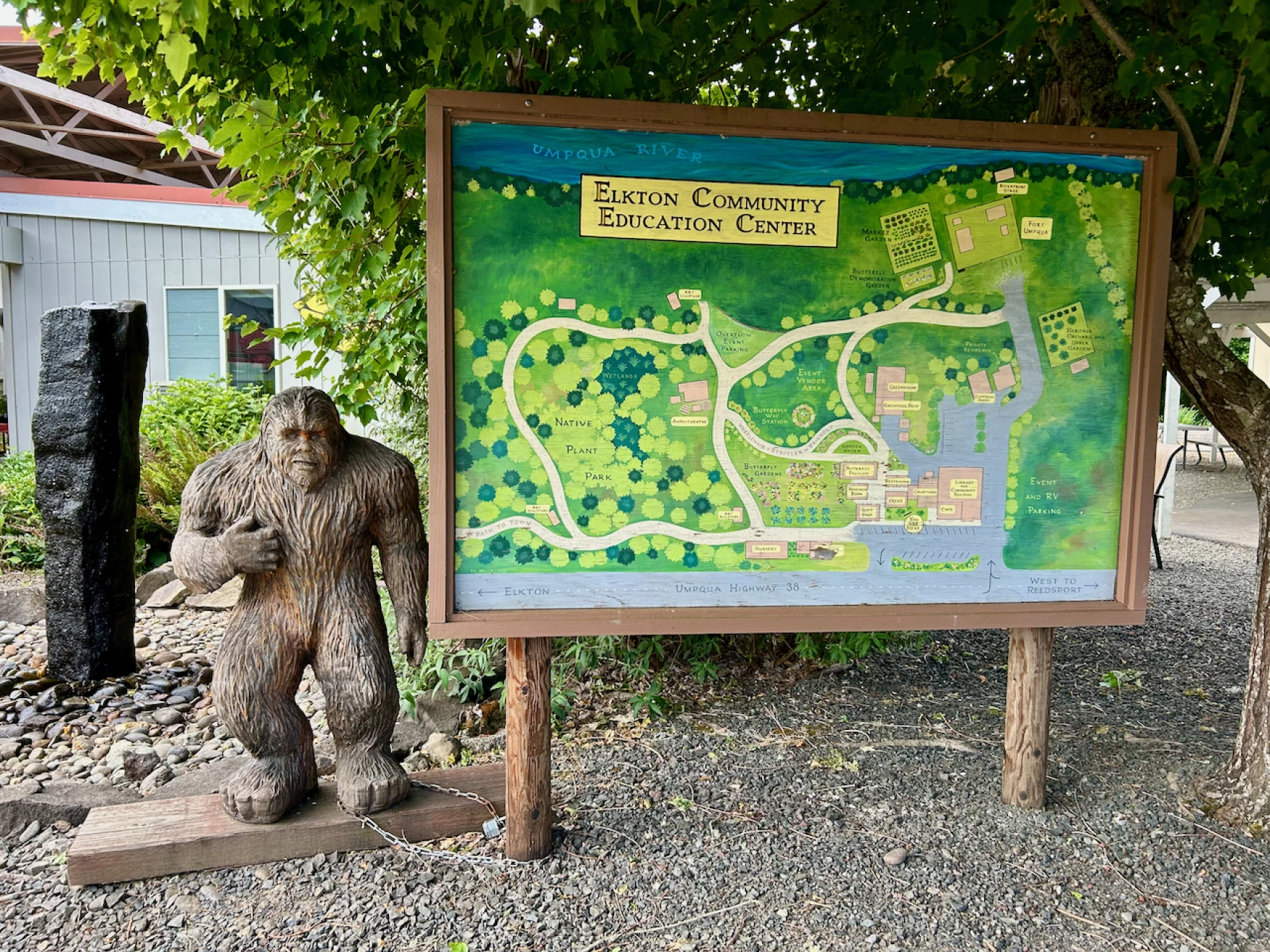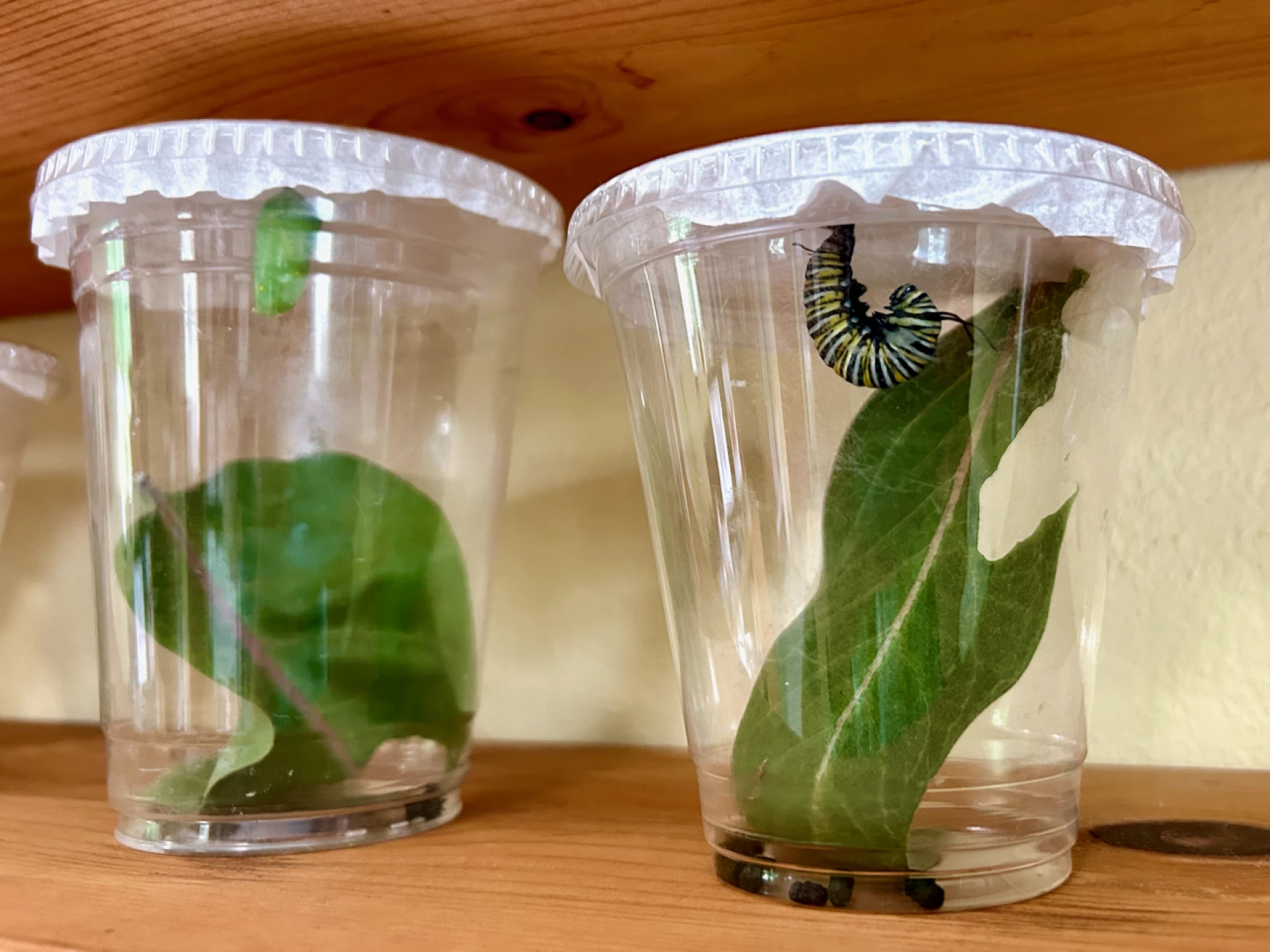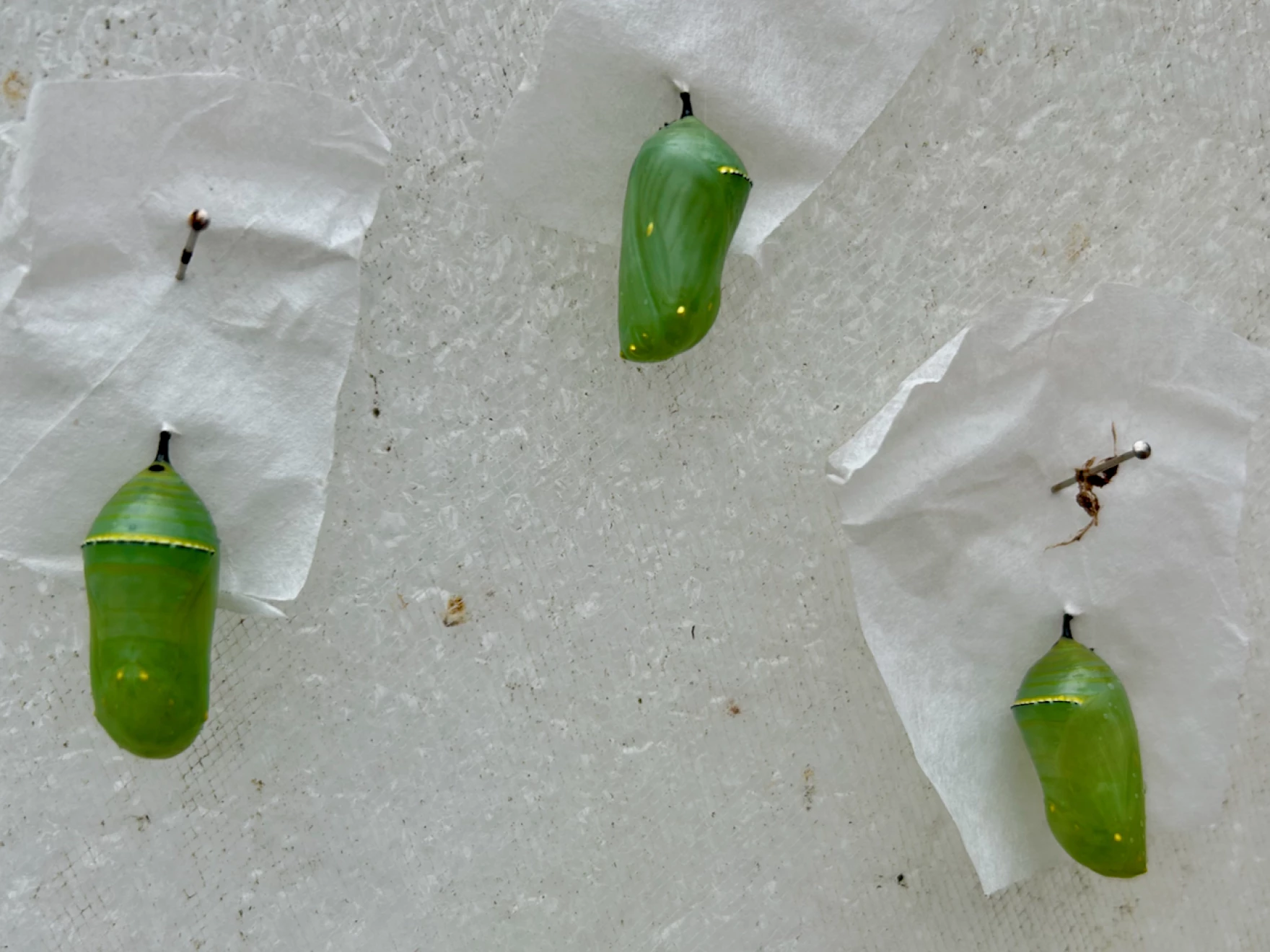
By KAREN RICHARDS/KLCC News
ELKTON — A small nonprofit in rural Douglas County is a key player in monarch butterfly research and conservation on the West Coast.
The Elkton Community Education Center houses a replica of Fort Umpqua, a native plant nursery, and for the past 13 years a butterfly pavilion.
Monarchs are native to the area, said Barbara Slott, the center’s volunteer Butterfly Steward.
“They migrate through here, through the Willamette Valley, they migrate up the coast, both directions, and so they spend winter on the coast of California hanging out in big clusters on the eucalyptus and pine trees on the coast where the weather is more moderate,” she said.
The pavilion rears the butterflies from eggs or very tiny caterpillars. This year, their initial monarchs were brought in by an advocate in Eugene.
“Right now we have 18, that’s what we’re starting with,” she said. “Last year we started with 19 caterpillars, and we ended up releasing over 500 butterflies.”

That number might sound far-fetched. But here’s why the math works: The initial 18 butterflies mate and lay eggs. A single monarch can lay 400 eggs (many of which will not make it to adulthood). The center releases the third generation, meaning fewer than two dozen initial monarchs can turn into hundreds in a matter of months.
About seven years ago, the Pavilion started working with Dr. David James from Washington State University, who’s studying the migratory patterns of West Coast monarchs.
“We put little tiny stickers on their wings, and each one has an individual number,” she said. “So we report all of that to him, and then if somebody happens to see a monarch with a tag on it, and can zoom in and read the number, they send that information to Dr. James.”
James is currently doing field work in Australia, and couldn’t arrange an interview. But he answered some emailed questions. He said before he began his research in 2012, it was suspected that Pacific Northwest monarchs migrated to the California Coast, but there was no scientific data to prove it. They’ve now shown conclusively that all Oregon monarchs and most of Washington’s overwinter in California.

Surprisingly, James said, an increasing percentage of butterflies tagged in eastern Washington and Idaho head south or south-east instead. The destination of those migrants is unknown, but James suspects it may be Arizona or Mexico.
Barbara Slott said raising monarch butterflies requires daily attention.
“One thing that you have to have is lots and lots of milkweed, because that’s the only thing a monarch caterpillar will eat,” she said. “And so if you don’t have that… you’re going to run out.”
The caterpillars live in individual clear cups, each with a milkweed leaf. Slott dumps out the frass, or poop, and gives each one a new leaf, every day.
They are very hungry caterpillars.
When they form their green chrysalis, they’re brought outside to the tented pavilion area. Slott said that’s where the public can see the action.

“When a butterfly emerges from the chrysalis, their wings are all kind of squished up and small, and their bodies are full of fluid,” she said. “So they spend the first three or four hours pumping that fluid from their body through the veins into their wings so they can fly, so they’re unable to fly for about three or four hours. It’s really a great process to watch when the butterfly comes out.”
For the next two months, Slott said, there are adult monarchs, chrysalises and caterpillars to look at. The center will release the third generation, numbered and tagged butterflies in September and October.
Dr. James said the tagging work helps scientists understand which locations are the most important overwintering sites, and provides insight into how monarch migration and survival are changing as the climate warms.
- During the summer, the Elkton Butterfly Pavilion is open to the public Tuesdays through Saturdays from 9 a.m. to 5 p.m., and Sundays from 10 a.m. to 4 p.m. Hours vary at other times of the year. It’s located at 15850 OR-38 W, in Elkton.


